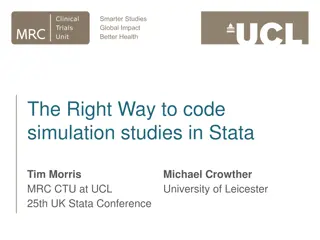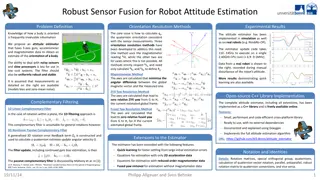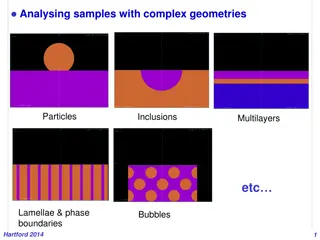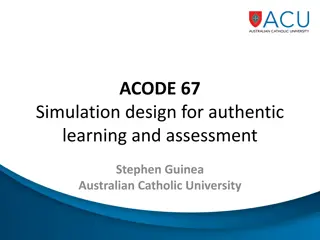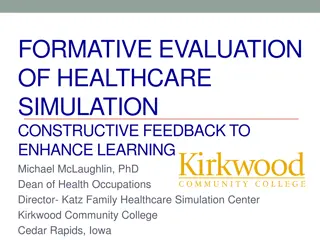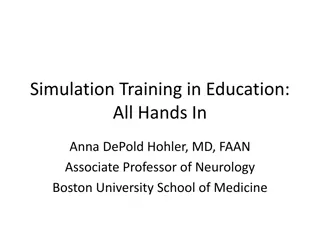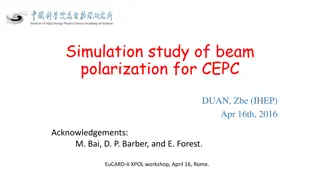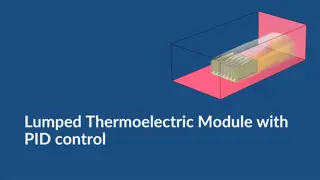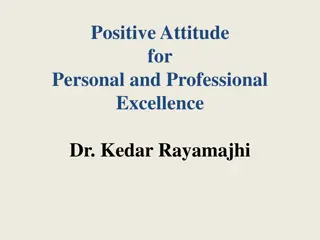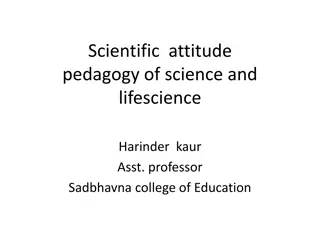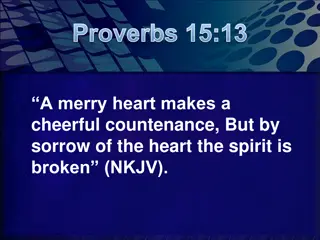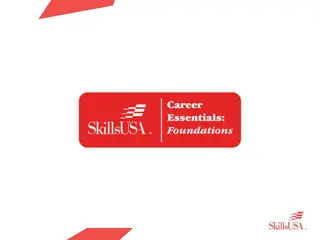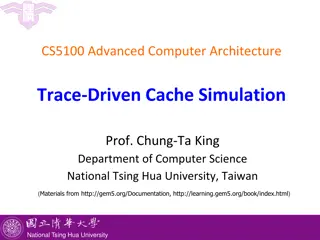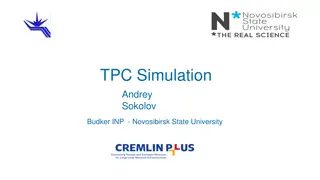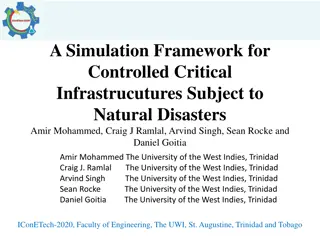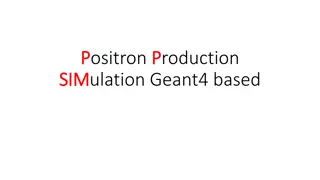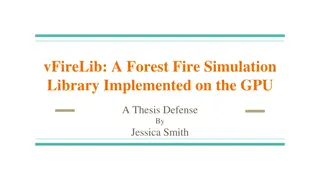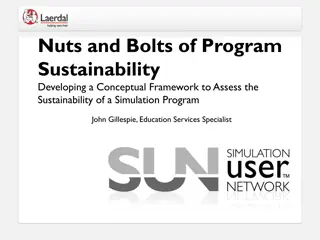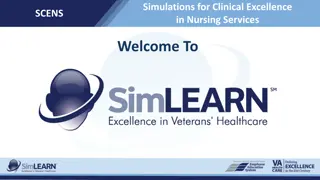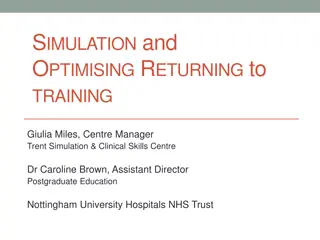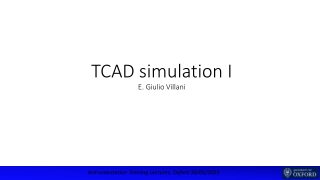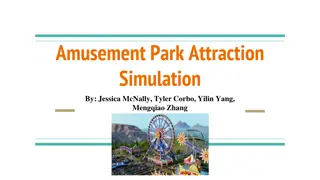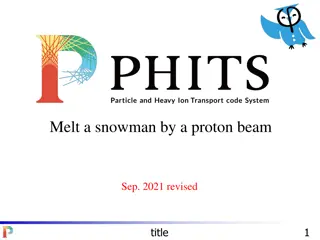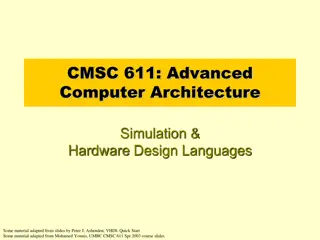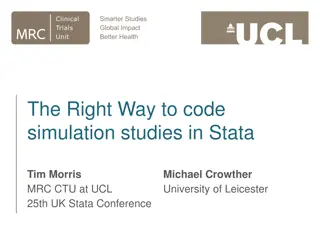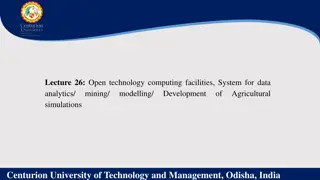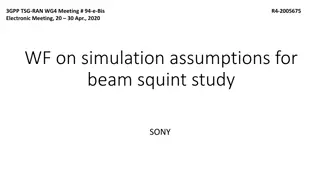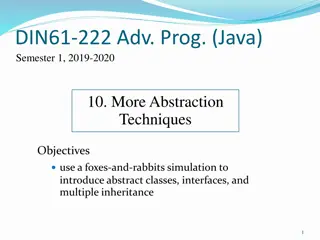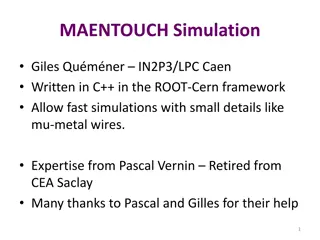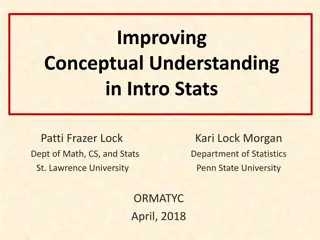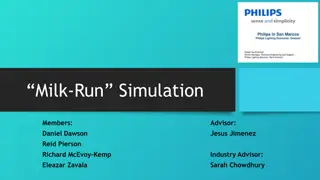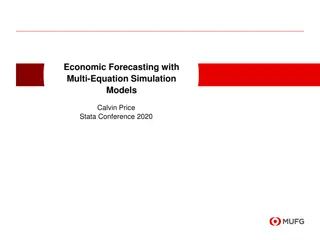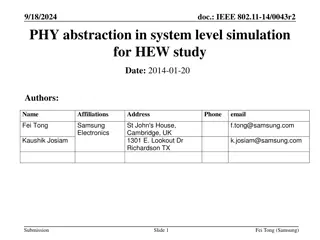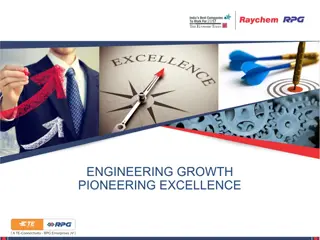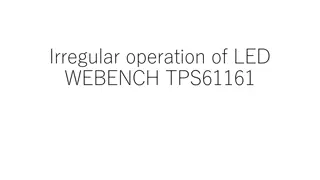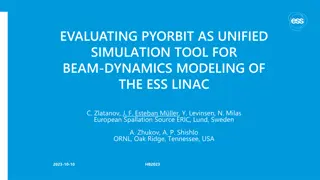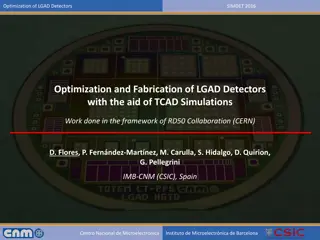Advanced Attitude-Based Applications and Simulation Framework
This content details the development and integration of a 6-DOF simulator for enhancing analysis modules used in debris mitigation and risk assessments within the aerospace industry. It focuses on upgrading software modules, incorporating attitude dynamics, improving disposal analyses for movable parts, and estimating drag and solar radiation coefficients. The framework also involves developing new modules, updating existing systems, and defining architecture trade-offs for optimal simulation outcomes.
Download Presentation

Please find below an Image/Link to download the presentation.
The content on the website is provided AS IS for your information and personal use only. It may not be sold, licensed, or shared on other websites without obtaining consent from the author. Download presentation by click this link. If you encounter any issues during the download, it is possible that the publisher has removed the file from their server.
E N D
Presentation Transcript
DMF-03 Enabling Attitude-Based Applications Gennaro Principe DEIMOS DRAMA WORKSHOP 23-24/06/2022 Trademarks "Elecnor Deimos", "Deimos" and the logo of Deimos (Elecnor Group) encompass Elecnor Group s companies of Aerospace, Technology and Information Systems: Deimos Space S.L.U. (Tres Cantos, Madrid, Spain), Deimos Engineering and Systems S.L.U. (Puertollano,Ciudad Real, Spain), Deimos Engenharia S.A. (Lisbon, Portugal), Deimos Space UK Ltd. (Harwell, Oxford, United Kingdom), Deimos Space S.R.L. (Bucharest, Romania). 1
DMF03 Enabling Attitude-Based Applications GOAL: Upgrade analysis modules used in debris mitigation and risk analyses (in MASTER and DRAMA software), taking into account spacecraft attitude-related dynamics Integration of a suitable 6 DOF simulator Improve disposal analyses based on attitude modes Account for movable parts (solar panels) DMF03 Estimate drag and solar radiation coefficients given object model and attitude law Augment analysis modules 2
DMF03 Enabling Attitude-Based Applications MAIN ACTIVITIES: Development and integration of a 6 DOF simulator Development of a new module for coefficient estimation Improve/update ARES, MIDAS and OSCAR 3
Attitude Simulation architecture definition Trade-off performed to identify the best approach. FOCUS cannot be modified so it is used as it is to perform 6DOF attitude simulation FOCUS interface modification is required to ensure that physical models are the same. This requires some parameters/functionalities to be available to the attitude simulator. Attitude simulation input file Dedicated file with attitude simulation data JSON format for better integration in the DRAMA environment Attitude simulation component generates attitude outputs: Attitude information reported at each propagation step same steps as propagation outputs Computed in post-processing, after propagation outputs merging Information reported depends on attitude law 4
Attitude Simulation Interfaces Static view of Attitude Simulator I/F with DRAMA environment FOCUS ICD extension 5
Attitude Simulation Procedure functional diagram Functional diagram of Attitude Simulator 6
Coefficient Estimator Concept Calculation of aerodynamics and solar radiation pressure (SRP) force coefficients for a given DMF 3D model, considering surface material properties and up to two rotating parts, i.e. solar arrays or large antennas Material database Attitude input 3D model Geometry & material asignments Aerodyn. force coefficients Averages, extremes, PDFs Statistical analysis Meshing Coefficient/ cross-section databases Model preparation SRP force coefficients Cross- sections 6-DoF simulator OSCAR DMF-03 Enabling Attitude Based Applications PM2, 2021-10-29 Page 7
ARES improvements ARES (Assessment of Risk Event Statistics) is used to assess collision-related events between an operational spacecraft and trackable objects orbiting the Earth. It provides: - - - Statistical (annual) collision probability Mean number of collision avoidance manoeuvres Fuel consumption associated with those manoeuvres NEW FUNCTIONALITIES Use attitude law to derive the equivalent target satellite radius (rather than considering constant cross section area) Introduce differential drag collision avoidance strategy Include user-defined constellations Update detection equations that allows to distinguish between observable and not-observable population 8
MIDAS Update MIDAS (MASTER-based impact flux and Damage Assessment software) is used to model the collision flux and damage statistics for a mission Example surface-1.att file: ... # # Epoch as ISO8601 string (CHAR*26) # MIDAS damage analysis based on attitude ephemerides: # A - Azimuth / Right ascension # -180 deg < A < 180 deg : azimuth of surface normal for Earth-oriented # -180 deg < A < 180 deg : right asc. deviation from sun LOS for Sun-oriented # -180 deg < A < 180 deg : right asc. of surface normal for inertially fixed DMF framework parses the CCSDS AEM DMF framework converts Quaternions to Euler angles DMF framework converts ephemerides into (JSON) ephemerides array pyMIDAS converts JSON ephemerides to new surface-<X>.att file MIDAS parses the attitude information and calls MASTER # h - Elevation / declination # -90 deg < h < 90 deg : elevation of surface normal for Earth-oriented # -90 deg < h < 90 deg : declination deviation from sun LOS for Sun-oriented # -90 deg < h < 90 deg : declination of surface normal for inertially fixed # #-------------------------------------------------------------------------------------------------- # Epoch / UTC A / deg h / deg #-------------------------------------------------------------------------------------------------- 2021-11-28T21:29:07.255784 0.0012 0.0146 2021-11-28T23:59:07.255456 0.0015 0.0148 2021-11-28T01:29:07.255345 179.5674 0.0234 2021-11-28T02:59:07.255345 179.5774 0.0123 #--------------------------------------------------------------------------------------------eof--- 9
OSCAR improvements OSCAR (Orbital Spacecraft Active Removal) addresses disposal manoeuvres at end-of-life and assesses the compliance of the latter stages of a mission with the mitigation guidelines. Different possible future scenarios for solar and geomagnetic activity can be analysed, as they are the main drivers in the estimation of the residual lifetime of an orbit. NEW FUNCTIONALITIES Use 6dof simulator and coefficient estimator modules developed in this project Introduce circular delayed de-orbit (only for chemical propulsion) Transfer time taken into account when using electric propulsion Update tether module Exploit resonance effects among several orbital perturbations for long-term disposals Extend definition of protected regions, introducing user-defined volumes 10
Thank you www.elecnor-deimos.com


